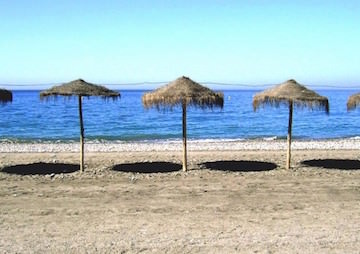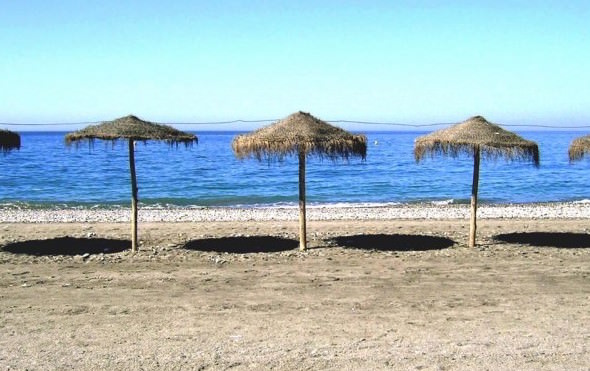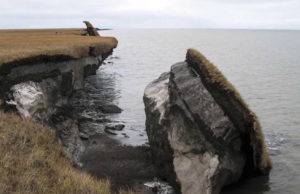The Arctic and the Mediterranean Face Hot-Spot Worries
Uneven heating of the earth’s surface as a result of climate change could see some regions facing seriously high rises in average temperatures.
By Tim Radford / Climate News Network

Temperatures could be too hot to handle on Mediterranean beaches. (Anne Ruthmann via Flickr)
This Creative Commons-licensed piece first appeared at Climate News Network.
LONDON — Forget the notion of a 2 degree C global average temperature rise. In parts of the Arctic, regional average warming passed that limit 15 years ago.
New research suggests that if the world really does warm to an average of 2 degree C, then mean temperatures in the Mediterranean region could be 3.4 degree C warmer than in pre-industrial times. And in some parts of the Arctic, 2 degree C average warming could translate as a 6 degree C rise.
Sonia Seneviratne, head of the land-climate dynamics group at Switzerland’s Institute for Atmospheric and Climate Science (ETH Zurich), and colleagues report in Nature journal that they have been thinking about the meaning of a 2 degree C global average warming.
Because it is an average, some regions will inevitably be hotter than this average. So she and her fellow researchers have been trying to calculate what further emissions of greenhouse gases in the atmosphere — the exhausts from fossil fuel combustion that drive global warming — will mean for the people who live in specific parts of the planet.
Average warming
They focused on what climate models could tell them about extremes of temperature and precipitation in selected regions on the global map.
The answer is disconcerting: to limit average temperature rises for the Mediterranean to 2 degree C, the world will have to sharply reduce its fossil fuel combustion and contain the global average warming to 1.4 degree C.
Since the planet is already on average 1 degree C warmer than it was in pre-industrial times, this puts the challenge of climate change in an ever more urgent context.
Professor Seneviratne pointed out two years ago that extremes might be more significant in climate change than global averages.
“We could potentially see
even greater regional variation
than these findings show.”
And she is not the only researcher to look for the significance of local climate change implicit in a shift in planetary averages. A team of oceanographers in 2013 examined much the same pattern of variation and predicted that, for some regions, real and enduring climate change could arrive by 2020.
“We even see starkly different rates of extreme warming over land when global average temperatures reach just 1.5°C, which is the limit to the rate of warming agreed to at the Paris climate talks,” Professor Seneviratne says.
“At 1.5°C, we would still see temperature extremes in the Arctic rise by 4.4°C, and a 2.2°C warming of extremes around the Mediterranean basin.”
If emissions rates do not change, new research by scientists in Australia shows that the Mediterranean, Brazil and the contiguous US could experience 2 degree C warming by 2030.
Land of extremes
Australia — famously a land of extremes of heat and drought and devastating floods — for the moment registers little projected change in extreme regional temperatures, even in a world 2 degree C warmer.
“This might be something peculiar about Australia’s climate, or perhaps it highlights problems with the climate models,” says Andy Pitman, director of the Australian Research Council’s Centre of Excellence for Climate System Science at the University of New South Wales (UNSW).
“If the latter, there is a risk Australia will lack warnings about the increases in extremes that are now clearly available to Northern Hemisphere countries.”
His co-author, UNSW research fellow Markus Donat, says: “What this research cannot take into account are abrupt climate shifts, known colloquially as ‘tipping points’.
“We have no way of knowing when our climate may change abruptly from one state to another, meaning we could potentially see even greater regional variation than these findings show.”
Tim Radford, a founding editor of Climate News Network, worked for The Guardian for 32 years, for most of that time as science editor. He has been covering climate change since 1988.
Your support matters…Independent journalism is under threat and overshadowed by heavily funded mainstream media.
You can help level the playing field. Become a member.
Your tax-deductible contribution keeps us digging beneath the headlines to give you thought-provoking, investigative reporting and analysis that unearths what's really happening- without compromise.
Give today to support our courageous, independent journalists.






You need to be a supporter to comment.
There are currently no responses to this article.
Be the first to respond.